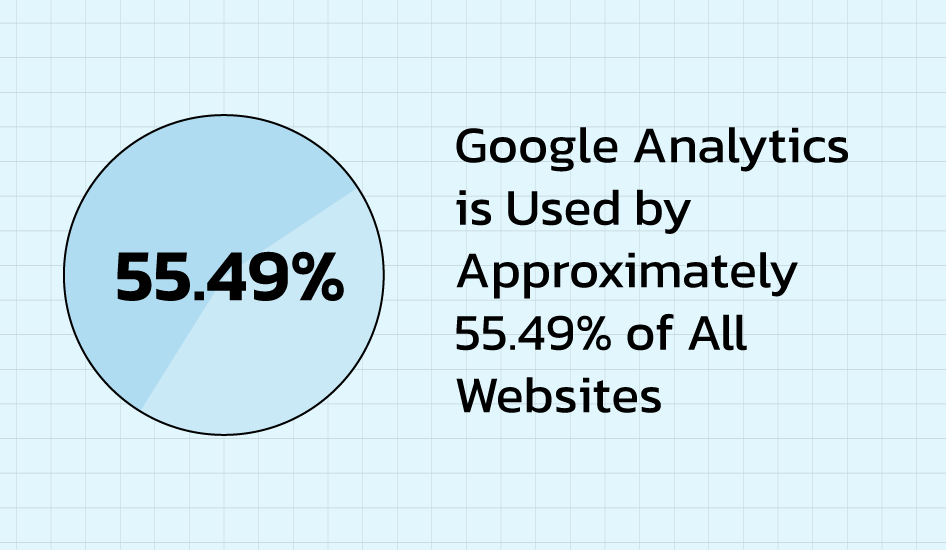eCommerce Website Checklist: 14 Essentials You Need to Know

Setting up an online business shares similarities with launching a ship into waters in the market. In today’s e-commerce landscape, simply having great products is insufficient to capture consumer attention. It requires a designed store with seamless functionality and advanced features.
Think of this eCommerce development checklist as your guide, shedding light on all the steps to build an eCommerce website that attracts customers and fosters long-term loyalty.
Each element on this checklist is essential for store owners to pursue eCommerce excellence. From choosing the Platform to ensuring your design reflects your brand identity in every aspect, all the way to implementing payment methods and providing a sense of security for your customers.
So, let’s embark on this journey together by exploring the eCommerce development checklist. Each completed task brings us closer to a voyage across the ocean of eCommerce.

Statista said the total global retail e-commerce transaction volume in 2021 reached 5.2 quadrillion United States dollars.
This figure is expected to grow by 56% in the coming years, reaching 8.1 trillion dollars by 2026.
Before we learn about the eCommerce development checklist, Here are some eCommerce Market Statistics for India (Reported by Statista)
- In 2023, the global eCommerce industry is expected to generate $63.17 billion in revenue.
- By 2027, the market is forecast to be worth US$107.10 billion, an increase in revenue of 14.11 percent over the previous five years.
- China is expected to be the largest market in 2023, with a volume of US$1,319.00bn.
- By 2027, the global e-commerce industry is predicted to have 1,090.0m users.
- As of 2023, They anticipate a penetration rate of 57.6%, which will rise to 73.7% by 2027.
Pre-Launch eCommerce Checklist
Now that you are familiar with the market of eCommerce, we shall begin with the pre-requisite points of the eCommerce development checklist. These tips are essential for store owners who want to make an impact in the eCommerce market.
1. Be Cautious About Selecting Platform and Technology:
The first thing all the checklists start from is the Platform of the eCommerce site. It would help if you thoroughly researched what different platforms offer and how they match your business needs.
Consider parameters like features, customization abilities, and scalability when comparing platforms like Shopify, WooCommerce, Magento, or any other platform.
Once you have concluded and decided about the Platform, check the web design works for almost every device and screen size for a user experience.
Don’t forget to optimize your images and streamline code while leveraging caching techniques to ensure loading times. This will help reduce bounce rates and keep visitors engaged.
2. Don’t lose Focus on The Design and User Experience:
Once you are settled with the selection of the Platform, it’s highly important to create a navigation system that guides visitors effortlessly through your website.
As a business owner, be careful and mindful about where to place the CTAs and buttons like Add to Cart and Checkout Now.
Wait? Aren’t you focusing on product images and videos offering a genuine view? As a business owner, note that you need to be consistent with the brand logo, color, and fonts to reinforce your brand image in the minds of your target audience.
3. Focus More on the Product and Content:
As you progress with your eCommerce development checklist, creating product descriptions that effectively combine information and engagement is essential. Highlight each product’s features, advantages, and specifics while ensuring pricing.
4. Look After Your Payment Gateways and Security:
As a business owner, the safety and confidence of customers should be your top-most priority. A customer having a bad experience or fraudulent experience while making a payment will take away ten other customers, too! Hence, you must integrate a reputable payment gateway that uses strong encryption and complies with PCI DSS and other security regulations. Installing an SSL certificate to encrypt sensitive client data is a great way to improve data security.
5. Work On Your SEO Game and Analytics:
Once you finish the first 4 points of the eCommerce development checklist, now is the time to buckle up for SEO.
The very first thing you can do is explore potential keyword options. Based on the analysis, you can fine-tune your product names, meta tags, descriptions, etc. Mind well that SEO has a huge role in your eCommerce success.
6. Be Clear About Shipping and Logistics:
Does your business operation end when a customer pays you for a product? No.
As a business owner, you shall have a sleepless night if your product sales are high, but 10 out of 7 deliveries are not on time. If you are not delivering your product on time, you will be out of the race soon.
As a business owner, you must establish a defined shipping framework that includes shipping methods, transparent rates, and accurate delivery timelines tailored to different locations and customer preferences.
7. Work on Your Customer Support & Be Ready for Launch:
Every customer has several queries before making a purchase. Especially an online purchase.
You must provide your customers with a working email, contact number, or chat support to resolve their queries. It does not end here. You must provide the relevant FAQs to save time for the customers by addressing their basic questions.
Now that you are done with customer support, the last part of the eCommerce development checklist consists of having a backup and recovery plan in case of a technical glitch.
Before you go live, have rigorous load testing; don’t be shy about that. This will help ensure your website can handle increased traffic during peak periods without issues. To gather feedback before the launch, involve team members. Select users in user acceptance testing.
Post-Site Launch Checklist
1. Optimize the Performance of the Site:
The first and foremost checklist point is to measure the site’s performance. No user wants to wait while making a purchase or browsing the products. You must ensure that your website can handle increased visitor traffic.
You must conduct regular stress testing by which you can come to know how your site behaves in terms of responsiveness and functionality during peak periods.
Don’t forget to check for page loading time. Anything above 4-5 seconds in loading time is considered harmful. Never miss out on buying hosting, domain, and cloud spaces.
2. Make the Most Out of SEO and Analytics:

If your site is performing well, applying SEO fundamentals is essential for online store owners to ensure they rank well on Google.
To do so, they can use the Google Analytics tool to measure user behavior, website traffic, and conversion rates. This information will help you make decisions that contribute to the growth and success of your website.
3. Customer Feedback and Iteration:
The next in the eCommerce development checklist is to collect customer feedback and their Responses seriously.
Have an iterative process to enhance the user experience, which builds a customer-driven website. This will increase your conversion rates.
4. Content Management and Updates:
Once the website is live, the actual work begins. Content management is as crucial as any other part of your business operation. Have informative blogs, tell them about products, and Provide in-depth comparisons. Not only this, but you must update the images and descriptions, too, if required.
Additionally, highlight time promotions and exclusive offers to capture the interest of returning customers and potential new visitors.
5. Security and Maintenance:
Once your eCommerce site is live, be tight at the security level. Your customer must not feel unsafe at any point while making a purchase, or they will never return.
For the same reason, you must evaluate the security features and parameters offered by the Platform.
6. Customer Support and Communication:
You can stop working on the customer support. Be reactive about every email, call, or chat support. An unhappy customer takes away 100s of others with him in online business. No eCommerce development checklist can be completed without customer support.
It is essential to stay connected with your customers. You can solve and update their problems by introducing products or exclusive offers through newsletters or notifications. This approach will help keep them engaged and satisfied with your services.
7. Analytics Review and Strategy Adjustment:
Analyze the data from your analytics continuously to assess the effectiveness of your strategies. Identify areas for improvement based on these insights and optimize marketing and sales tactics accordingly to meet performance goals and business objectives. Following this checklist after launching an eCommerce store will ensure long-term success by providing customers with a seamless and enjoyable shopping experience while enabling you to navigate changing market dynamics with agility.
Wrap Up
So, that is it from my end regarding the eCommerce development checklist. These points are essential for online store owners who have just started in the eCommerce segment. I hope this will help you succeed. But, if you are still in a dilemma and want professional help, we are here. Contact us immediately to set up your eCommerce Store with the help of NFlow Tech.







